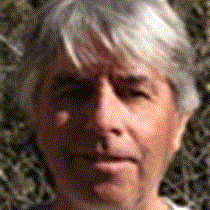Glacier Bay National Park
George Vancouver, in 1794, encountered nearly impassible ice floes calved by a wall of ice several miles wide and 300-feet-high jutting into the strait he would name Icy Strait. The wall of ice would recede some 65 miles in the succeeding 200 years or so, creating what we today know as Glacier Bay. This afternoon the National Geographic Sea Bird idles for nearly an hour in front of the magnificent Margerie and Grand Pacific glaciers that once filled all of Glacier Bay to a depth of over 1000 feet. On a cool and cloudy day, typical of Glacier Bay even in the heart of summer, we stand bundled up in warm clothes, marveling at the awesome spectacle in front of us, hoping for a giant calving of ice the native Tlingit people called “white thunder.”
When glaciers recede from the landscape, the land lies in rubble, depleted of all nutrients and soil. The magical process known as primary succession begins, a process begun from the rubble with small groundcover plants culminating several hundred years later in a mature old-growth forest. Animal life returns to the landscape, aquatic life to the streams, and marine life to the saltwater body formerly filled with ice as part of the age-old process, a process that has probably occurred here several times in Earth’s history.
William S Cooper, a biologist, began the study of primary succession in Glacier Bay in the early 1900s. Realizing that what scientists had been speculating about was actually happening in Glacier Bay, he advocated for protection of the area based principally on its value to scientific study and research. His tireless efforts helped Glacier Bay achieve National Monument status in 1925, followed by National Park status in 1980.
Today, Glacier Bay National Park and Preserve is one of our largest national parks, encompassing over three million acres, nearly all of it designated wilderness. A United Nations World Heritage Site and Biosphere Marine Reserve, Glacier Bay National Park stands with Wrangell–St Elias National Park, Kluane National Park in the Yukon, and the Alsek-Tatshenshini Wilderness Area as the largest contiguous designated, protected wilderness in the world.
The clouds lift as we progress up the bay. The mountains of the massive Fairweather Range take shape as the tidewater glaciers come into view – Lamplugh, Reid, Margerie, and Grand Pacific, each in turn glow bluish and majestically in the murky sun. Along the way, Glacier Bay’s prolific wildlife has us on deck, binoculars to our eyes – humpback whales in Sitakaday Narrows, Steller sea lions and thousands of nesting seabirds including tufted puffins at the Marble Islands, mountain goats at Gloomy Knob, and a loping black wolf in Russell Cut. At Bartlett Cove after dinner, we were entertained by a mother porcupine and her baby.
Beyond its numerous and sensational glaciers, beyond its spectacular mountain scenery, beyond its plethora of wildlife, Glacier Bay’s most noteworthy feature is “change.” Its dynamic landscape is ever changing – glaciers melt away, the sea fills the void, the forest renews itself. Nothing here is static. Our Park Service Ranger Fay leads our programing, documenting the change that has occurred here. Bertha, our Cultural Interpreter, talks of the changes her people, the Huna Tlingit who consider Glacier Bay their spiritual homeland, have experienced over the many centuries they have lived here. We enjoyed a wonderful day in Glacier Bay. Come back in 20 years, or even 10, and the land won’t look the same.




